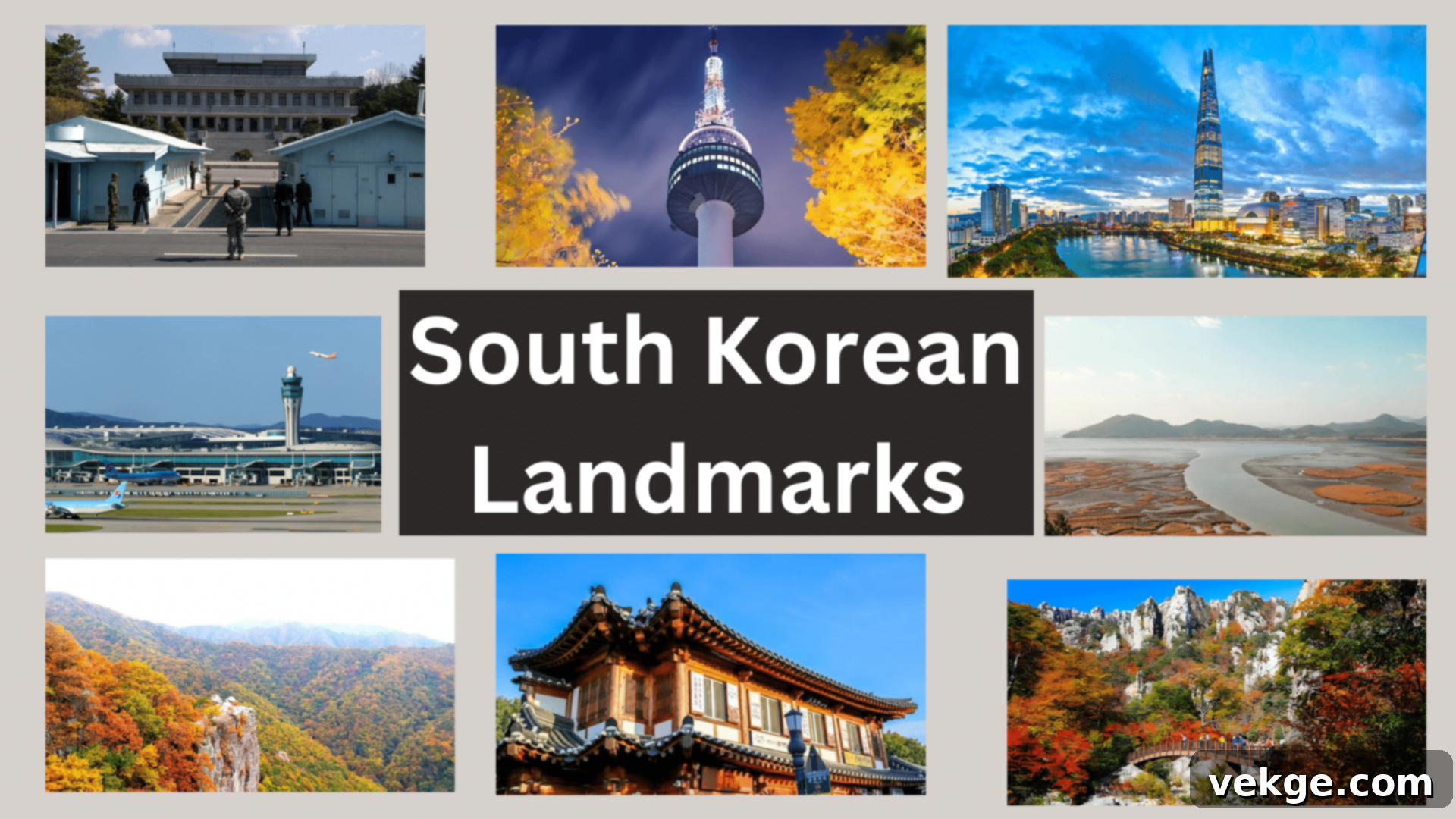Discover the 15 Must-Visit Landmarks in South Korea: Your Ultimate Travel Guide
South Korea is a land of captivating contrasts, where ancient traditions blend seamlessly with futuristic innovation. For travelers planning an unforgettable journey, the country offers an incredible array of sites, from majestic royal palaces and serene Buddhist temples to breathtaking natural landscapes and cutting-edge modern architectural marvels. To help you make the most of your adventure, we’ve curated a definitive list of the top 15 must-visit landmarks in South Korea, ensuring you experience the very best this dynamic nation has to offer.
Whether you’re a history enthusiast eager to delve into Korea’s rich past, a nature lover yearning for scenic beauty, or someone fascinated by contemporary culture and technology, these carefully selected locations promise unique and unforgettable experiences. Get ready to explore destinations that truly highlight South Korea’s deep cultural heritage, its vibrant present, and its visionary future.
Why These Landmarks Matter
South Korea’s landmarks are far more than just picturesque spots for photos; they are living testaments to the nation’s profound history, resilient spirit, and rapid evolution. Each site offers a crucial glimpse into the Korean identity, from the grandeur of royal palaces that served as the heart of dynasties for centuries to the sleek, modern skyscrapers that symbolize the country’s forward-thinking vision and global leadership.
Visiting these iconic locations provides an unparalleled opportunity to understand Korean culture, history, and core values. They allow travelers to trace South Korea’s remarkable journey from an ancient kingdom to a leading global force in technology, pop culture, and economic development. Whether your interest lies in the intricate details of historical architecture, the tranquil beauty of natural wonders, or the bold statements of modern design, these landmarks offer genuine connections to what truly makes South Korea a special and compelling destination for any traveler.
South Korea’s Most Impressive Landmarks
South Korea proudly showcases a diverse collection of landmarks that span millennia of history and rich cultural narratives. These remarkable sites serve as windows into the nation’s illustrious past, highlight its stunning natural beauty, and project its ambitious, forward-thinking vision. From the intricate designs of royal palaces to the towering presence of modern skyscrapers, each landmark provides unique and profound insights into Korean identity, traditions, and aspirations. Prepare to be inspired by the depth and variety of these national treasures.
Historical Landmarks: Step Back in Time
Embark on a captivating journey through time to witness Korea’s royal heritage, profound spiritual traditions, and exquisite traditional architecture. These historical treasures have stoically endured through wars, periods of occupation, and relentless modernization, each surviving to tell its compelling story today. Every site offers a precious window into Korea’s rich cultural tapestry, inviting visitors to explore the legacies of kings, scholars, and ancient civilizations.
1. Gyeongbokgung Palace
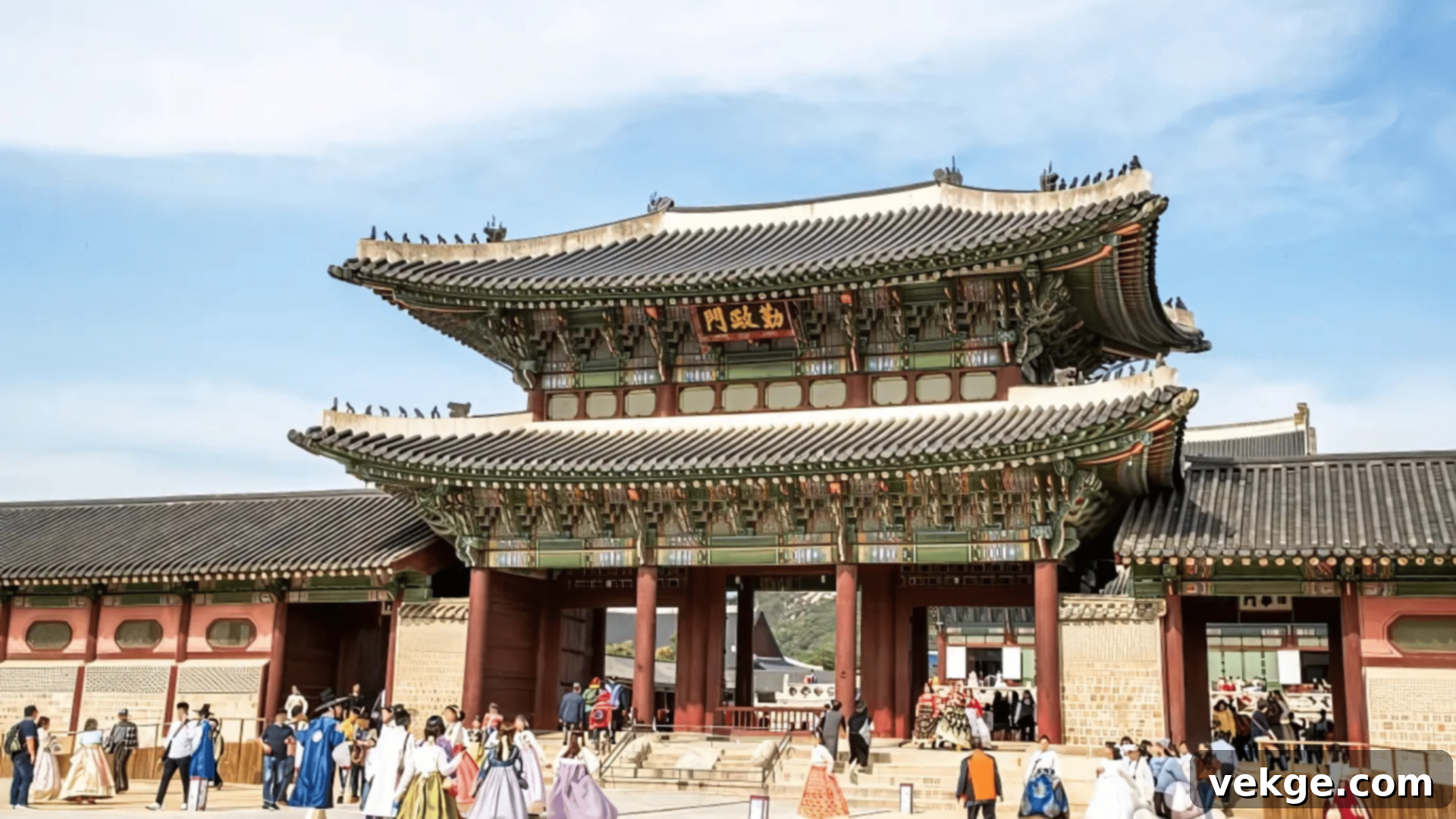
Overview: Gyeongbokgung Palace stands as the largest and most magnificent of the Five Grand Palaces constructed during the Joseon Dynasty. Located in the heart of Seoul, it is a quintessential symbol of Korean royal power and architectural beauty.
Facts:
- Originally built in 1395, it served as the main royal palace for over 500 years.
- Tragically destroyed by fire during the Japanese invasions of the late 16th century, it was extensively restored in the 19th century under the regency of Heungseon Daewongun.
- The expansive complex features over 7,000 rooms spread across numerous buildings and pavilions, including the impressive Geunjeongjeon Hall and Gyeonghoeru Pavilion.
- Its name, “Palace Greatly Blessed by Heaven,” reflects its auspicious designation as the primary seat of the Joseon monarchs.
Why Visit: Immerse yourself in the grandeur of Korea’s royal past. Don’t miss the colorful and highly symbolic Changing of the Guard ceremony, a vibrant reenactment that brings history to life. Explore the intricate courtyards, majestic halls, and serene royal gardens that once housed kings and queens.
2. Changdeokgung Palace & Huwon (Secret Garden)
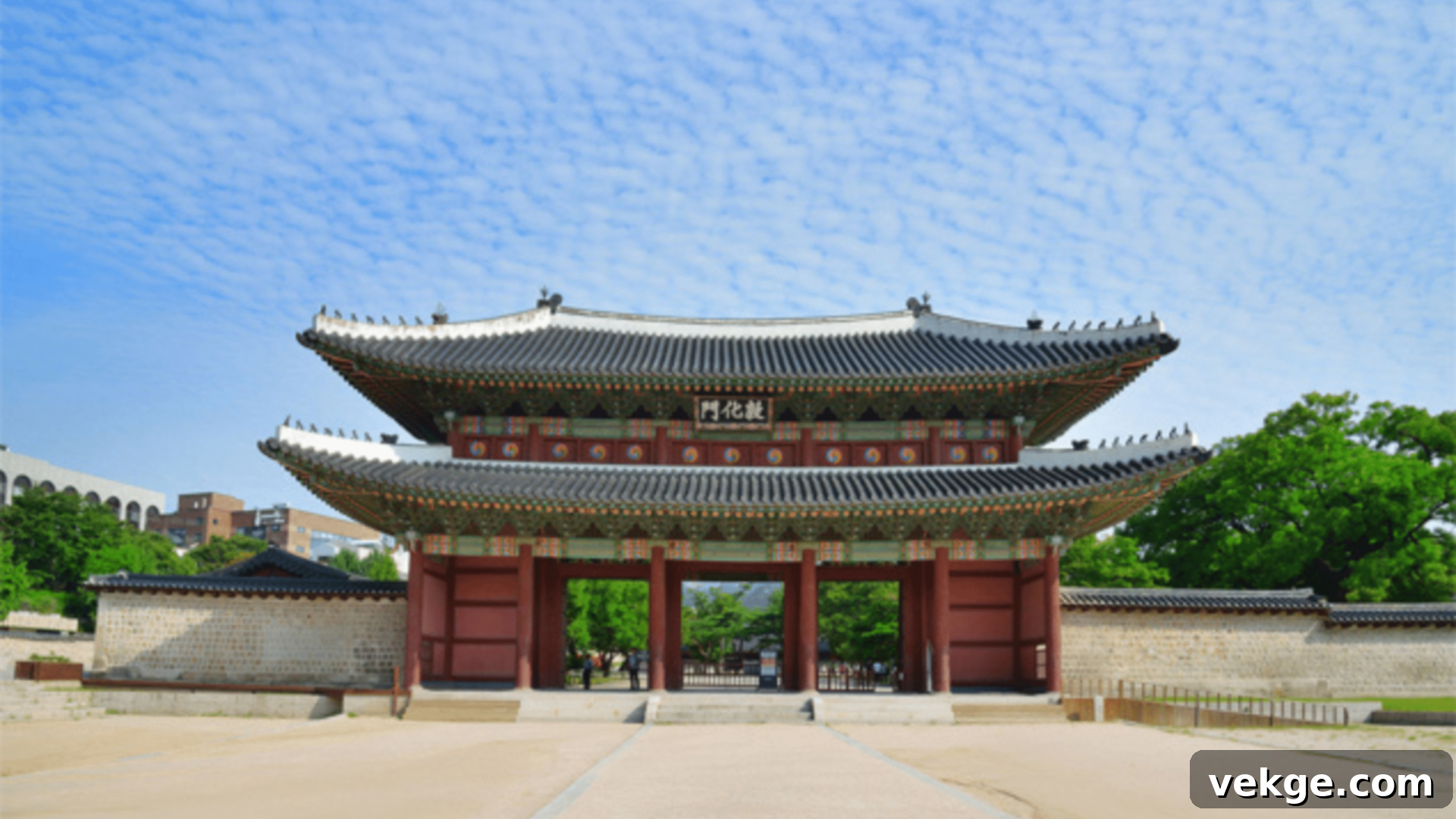
Overview: A designated UNESCO World Heritage Site, Changdeokgung Palace is celebrated for its exceptional harmony with the surrounding natural landscape. Unlike Gyeongbokgung, it was built to adapt to the topography rather than imposing on it, creating a more organic and tranquil setting.
Facts:
- Constructed in the early 15th century, it served as a favored secondary palace for many Joseon kings and became the primary royal residence for several centuries after Gyeongbokgung’s destruction.
- Its most famous feature is the sprawling Huwon, or “Secret Garden,” a meticulously designed traditional landscape garden that once served as a private retreat for the royal family.
- Changdeokgung is considered one of the best-preserved royal palaces in Seoul, maintaining much of its original structure and ambiance.
Why Visit: Discover the serene beauty of the famous Secret Garden (Huwon) on a guided tour, where you can admire the perfect blend of architectural elements and untouched nature. Experience a different side of Joseon royal life, characterized by understated elegance and environmental integration.
3. Bulguksa Temple
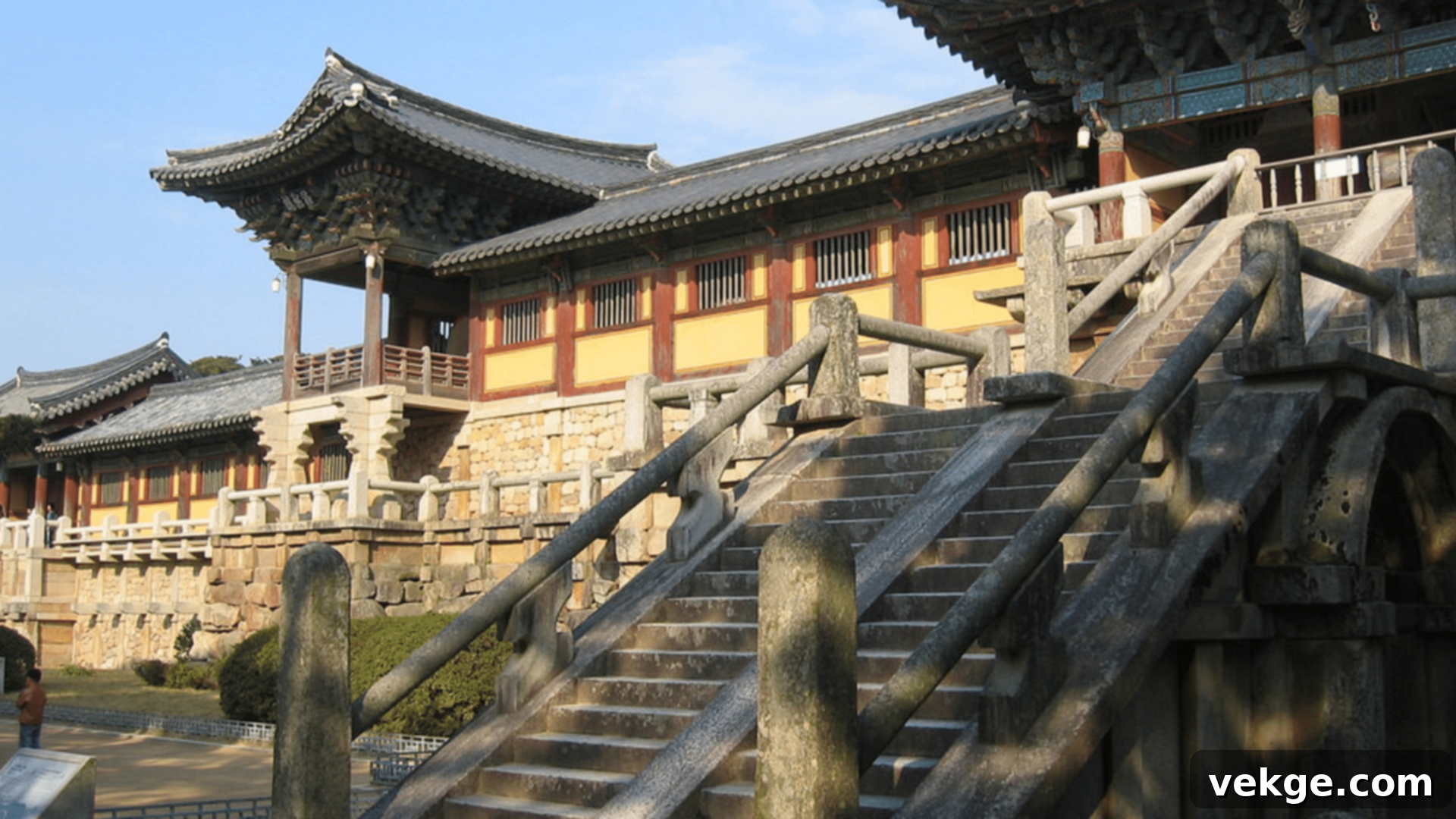
Overview: Nestled on the scenic slopes of Mount Toham in Gyeongju, Bulguksa Temple is a resplendent Buddhist temple complex, often regarded as a masterpiece of Silla-era Buddhist art and architecture.
Facts:
- Originally established in the 8th century during the flourishing Silla Kingdom, a period considered the golden age of Korean Buddhist culture.
- It is home to seven designated National Treasures of South Korea, including the iconic Dabotap and Seokgatap stone pagodas, and the Cheongun-gyo and Baegun-gyo stone bridges.
- Recognized for its outstanding universal value, Bulguksa Temple was inscribed as a UNESCO World Heritage Site in 1995.
Why Visit: Marvel at the profound ancient Buddhist art and sophisticated architecture that exemplify Korea’s golden age. Experience a sense of peace and spiritual reflection amidst historical relics and meticulously crafted structures.
4. Jeonju Hanok Village
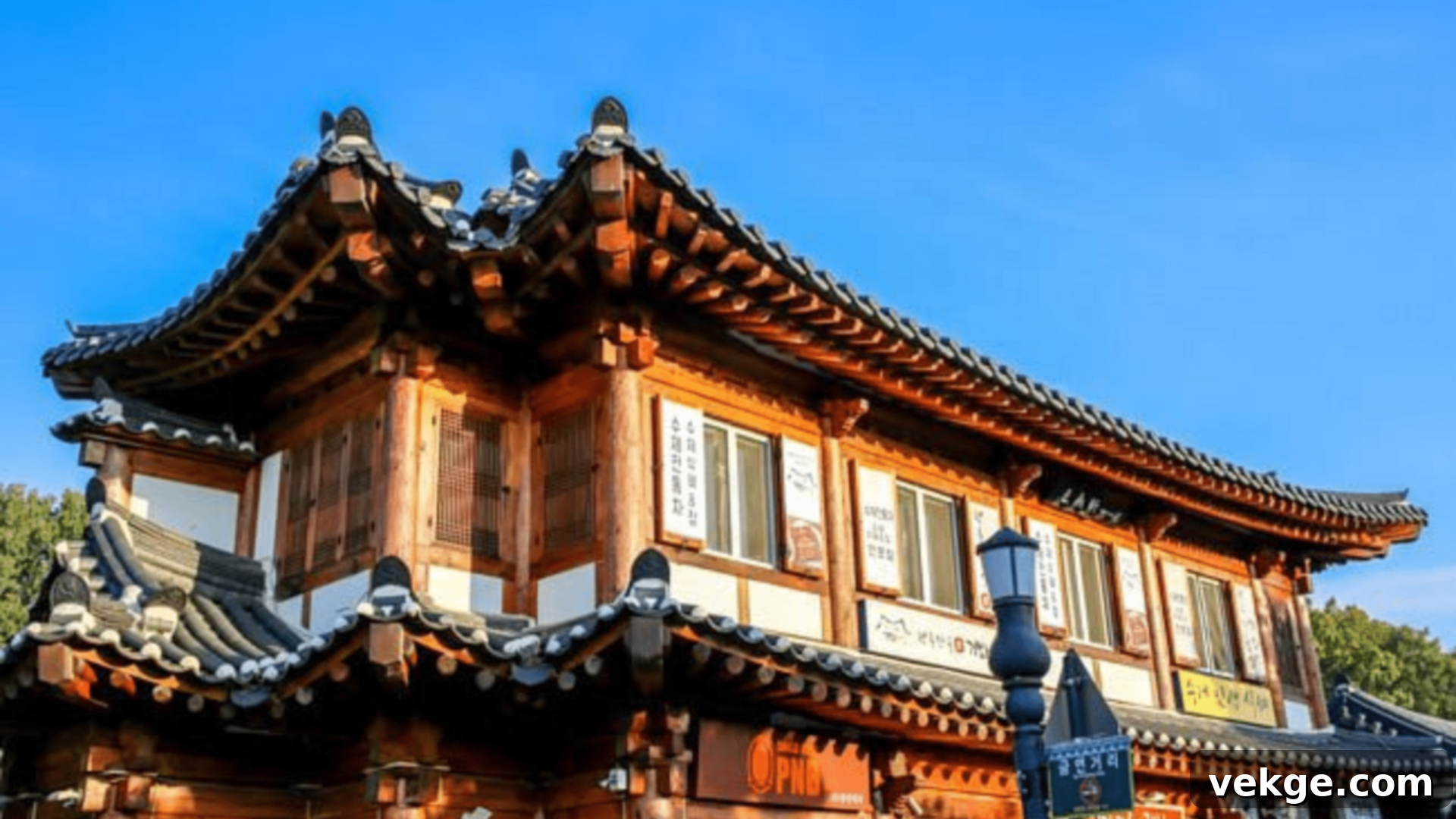
Overview: Jeonju Hanok Village is a vibrant cultural enclave featuring over 800 traditional Korean hanok houses, offering an authentic glimpse into historical Korean life within a modern city.
Facts:
- The village is characterized by its distinctive hanok houses, known for their elegant curved roofs and environmentally conscious construction.
- It is renowned for its rich food culture, proudly considered the birthplace of the iconic Korean dish, bibimbap, and a UNESCO City of Gastronomy.
- As one of the best-preserved traditional villages in Korea, it provides a unique living museum experience.
Why Visit: Stroll through charming cobblestone streets, rent a hanbok (traditional Korean dress) for a truly immersive experience, and explore numerous craft shops, tea houses, and cultural centers. Indulge in traditional Korean cuisine and soak in the serene atmosphere of a bygone era.
5. Bukchon Hanok Village
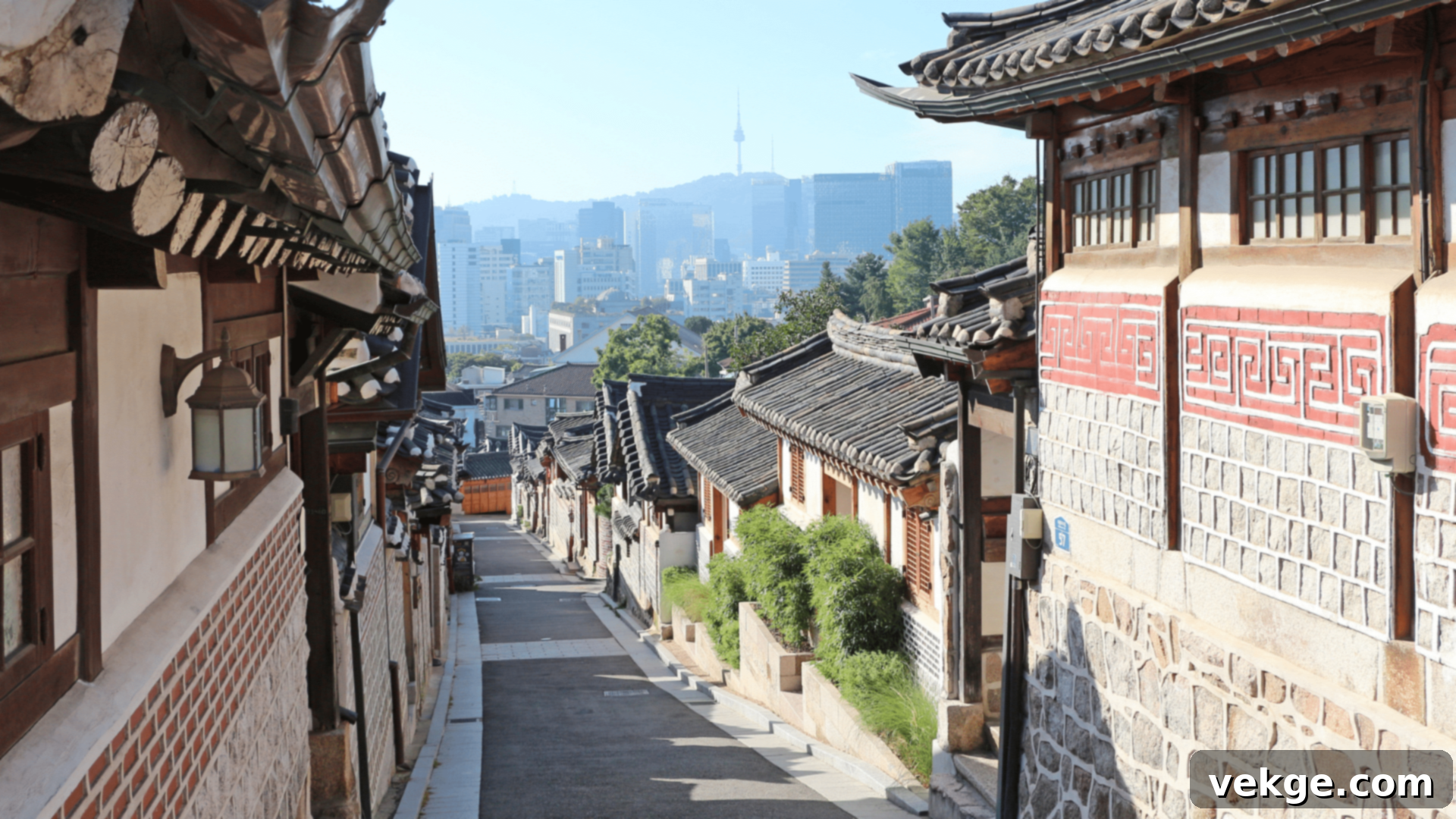
Overview: Nestled between Gyeongbokgung and Changdeokgung Palaces, Bukchon Hanok Village is a historic neighborhood in the heart of Seoul that offers a striking contrast of traditional charm against a modern metropolis backdrop.
Facts:
- Historically, this area was home to noble families and high-ranking officials during the Joseon Dynasty due to its auspicious location.
- It preserves hundreds of traditional Korean houses, many of which are still inhabited today.
- Many of these beautifully restored buildings now serve as cultural centers, boutique guesthouses, traditional tea houses, and small museums, offering visitors deeper insights into Korean heritage.
Why Visit: Wander through narrow alleyways and discover the iconic “Eight Scenic Spots of Bukchon” for stunning photo opportunities. Witness how traditional architecture thrives within a bustling modern city, offering a unique blend of past and present.
Natural Landmarks: Korea’s Breathtaking Outdoors
The natural beauty of South Korea often comes as a delightful surprise to first-time visitors, revealing a diverse and spectacular landscape. From expansive coastal wetlands teeming with wildlife to dramatic volcanic islands and majestic mountain peaks, the country’s natural wonders offer peaceful and invigorating retreats from the hustle and bustle of urban life. These stunning sites beautifully showcase Korea’s rich biological diversity, geological marvels, and serene scenic beauty.
6. Suncheonman Bay Wetland Reserve
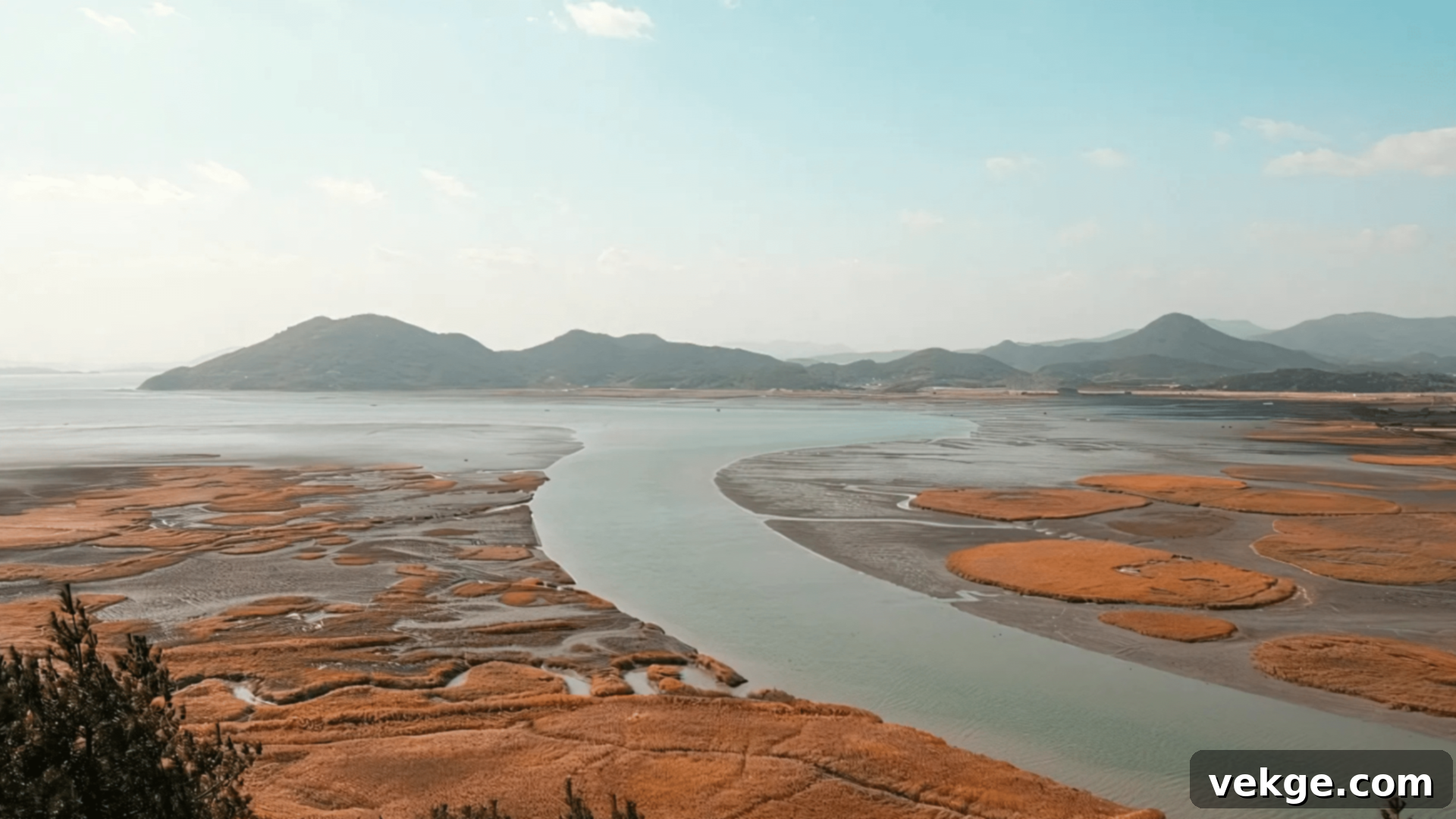
Overview: Suncheonman Bay Wetland Reserve is globally recognized as the largest field of reeds in South Korea, a sprawling and ecologically vital area situated along the country’s southern coast.
Facts:
- The vast reed beds stretch for kilometers, with individual reeds often growing taller than a person, creating a mesmerizing natural panorama.
- This biodiverse haven is a critical habitat for over 140 species of migratory birds, including rare cranes and wild geese, along with numerous unique plant species.
- A well-maintained boardwalk allows visitors to walk directly through the heart of the wetlands, offering immersive views without disturbing the delicate ecosystem.
Why Visit: Experience the tranquil and mesmerizing sight of the reeds swaying gracefully in the breeze, especially during sunset when the landscape transforms into a canvas of golden hues. It’s a prime location for birdwatching and photography, offering a peaceful escape into nature.
7. Seoraksan National Park
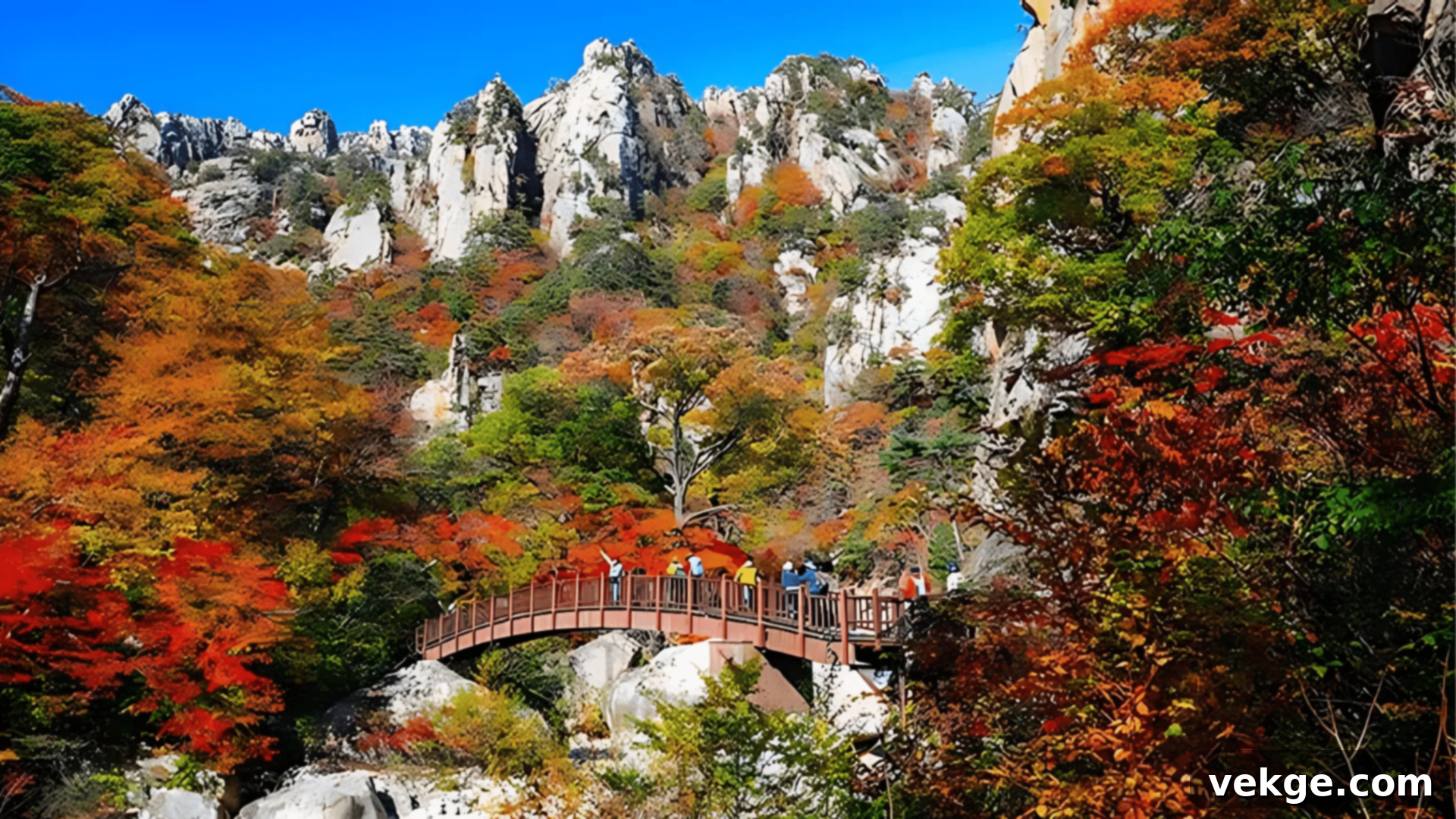
Overview: Seoraksan National Park is widely regarded as one of Korea’s most spectacular mountain areas, famous for its dramatic granite peaks, lush valleys, crystal-clear streams, and ancient forests.
Facts:
- Its exceptional biodiversity and stunning natural beauty led to its designation as a UNESCO Biosphere Reserve.
- The park is dominated by Daecheongbong Peak, which majestically rises to an elevation of 1,708 meters, making it the third-highest mountain in South Korea.
- Within its boundaries, visitors can find the ancient Sinheungsa Temple, dating back to the Silla era, and a towering bronze Buddha statue, adding cultural depth to the natural splendor.
Why Visit: Hike through a variety of stunning trails catering to all fitness levels, from gentle strolls to challenging ascents. Seoraksan is particularly famous for its breathtaking fall colors, which attract visitors from across Asia, transforming the landscape into a vibrant tapestry of reds, golds, and oranges.
8. Mudeungsan National Park
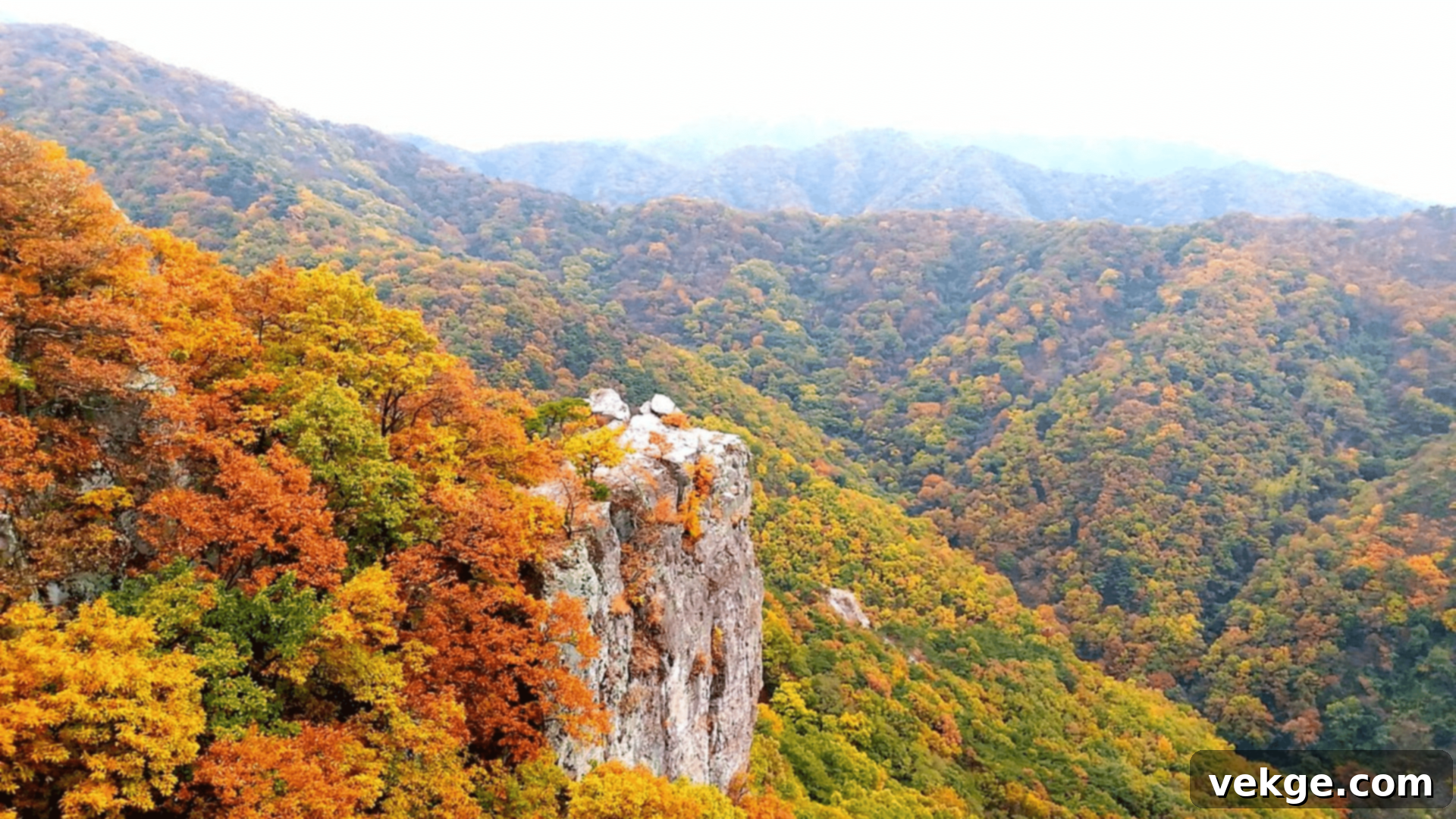
Overview: Mudeungsan National Park is a distinctive mountain park celebrated for its unique columnar joint rock formations and its magnificent display of autumn foliage. It serves as a vital natural and cultural landmark in the southwestern region of Korea.
Facts:
- Strategically located near the city of Gwangju, making it easily accessible for both locals and tourists.
- The park features three prominent peaks—Cheonwangbong, Jiwangbong, and Inwangbong—and offers numerous well-maintained hiking trails that showcase its geological wonders, such as the Jusangjeolli Cliffs.
- It is also home to Jeungsimsa Temple, a significant historical site recognized as the oldest temple in Gwangju, enriching the park’s cultural heritage.
Why Visit: Enjoy a range of accessible hiking routes that lead to spectacular panoramic views of the surrounding countryside and the unique rock formations. It’s an ideal spot for nature photography and a peaceful escape into the wilderness.
9. Jeju Island
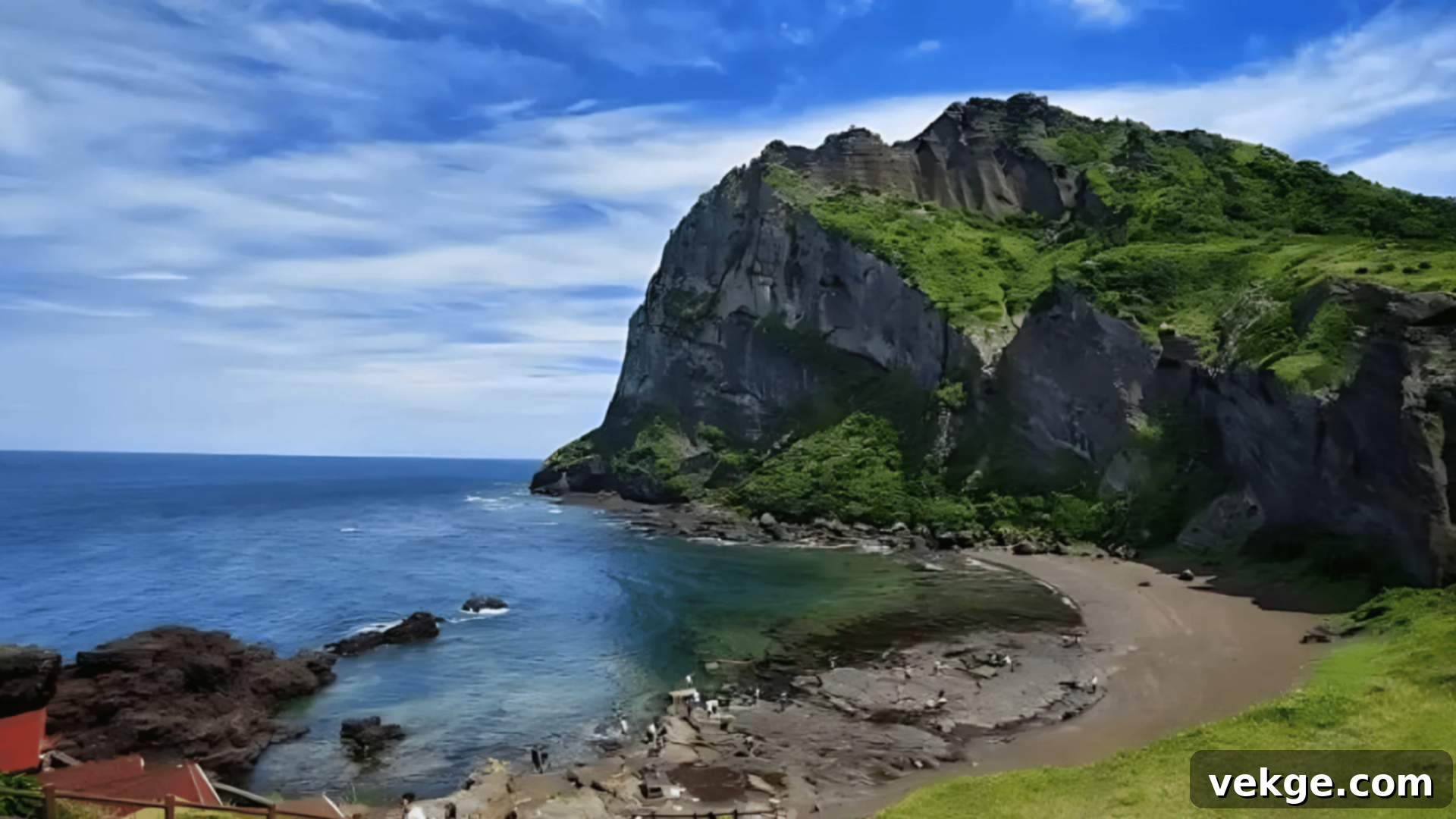
Overview: Often referred to as “Korea’s Hawaii,” Jeju Island is a remarkable volcanic island renowned for its unique landscapes, pristine beaches, and distinctive cultural traditions. It is South Korea’s most popular holiday destination.
Facts:
- As Korea’s largest island, Jeju is a UNESCO World Heritage Site, recognized for its geological features including Mount Hallasan, the highest mountain in South Korea, and an extensive system of lava tubes.
- The island is famous for its “haenyeo” (female free-divers), who harvest seafood without breathing apparatus, embodying a unique and endangered cultural heritage. It is also known for its iconic stone grandfather statues, “dol hareubang.”
Why Visit: Explore fascinating lava tubes, discover stunning waterfalls, relax on beautiful sandy beaches, and immerse yourself in a distinct island culture. From challenging hikes up Hallasan to scenic coastal drives, Jeju offers an incredible variety of activities for every type of traveler.
Modern Landmarks: Symbols of Innovation and Growth
South Korea’s astonishingly rapid development and technological prowess have given rise to an array of impressive modern structures that brilliantly showcase the country’s innovation, dynamism, and exponential growth. These contemporary landmarks stand as powerful symbols of Korea’s technological progress, its artistic vision, and its forward-thinking aspirations, embodying national pride and remarkable achievements on the global stage.
10. N Seoul Tower
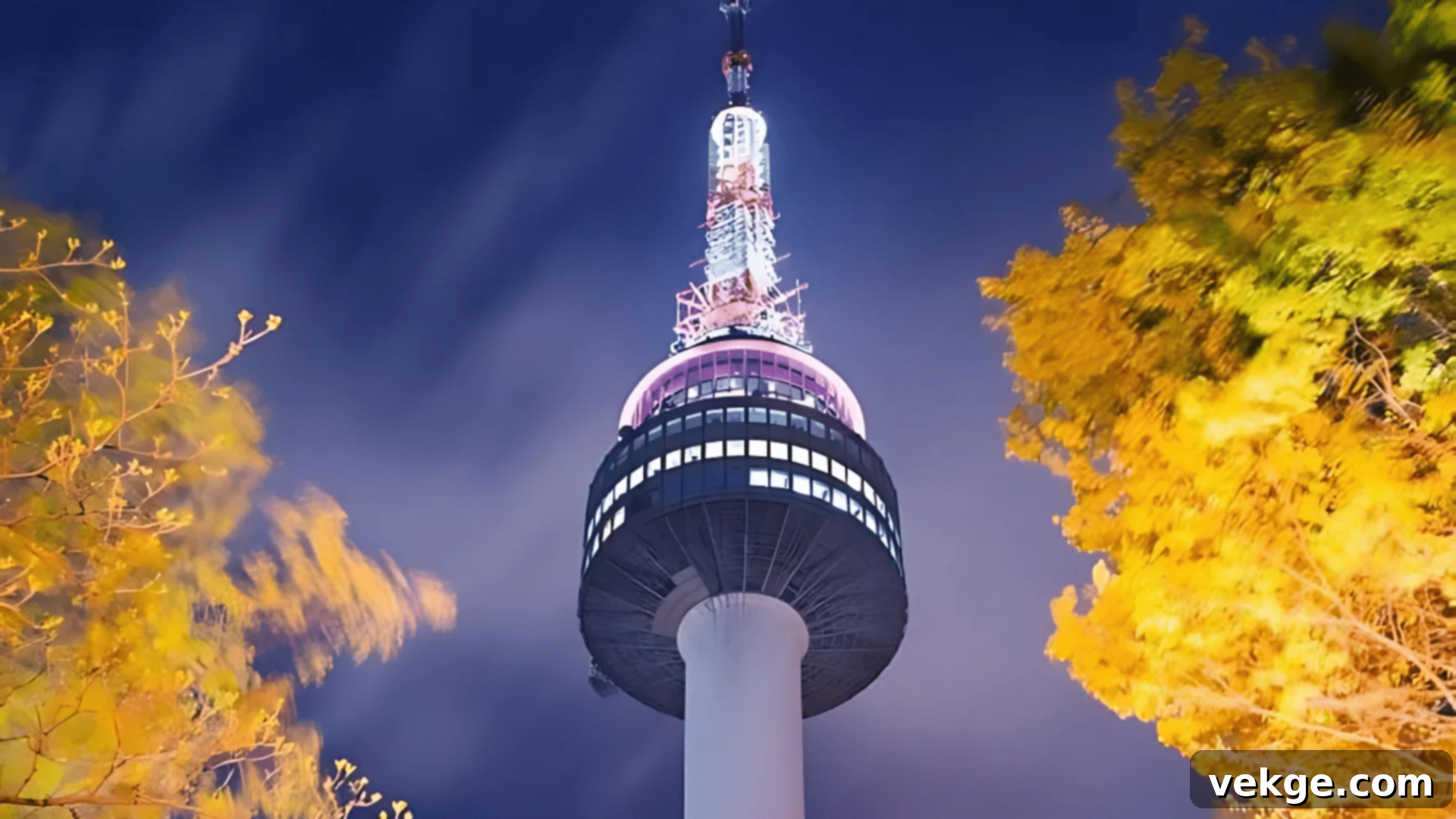
Overview: The N Seoul Tower, officially known as Namsan Seoul Tower, is a prominent communication and observation tower perched atop Namsan Mountain in the heart of central Seoul, serving as an iconic symbol of the city.
Facts:
- Completed in 1971 as a broadcasting tower, it was opened to the public in 1980 and has since become one of Seoul’s most beloved attractions.
- The tower itself stands 236 meters (774 feet) tall, but its location on Namsan Mountain gives it an overall height of approximately 480 meters (1,575 feet) above sea level, offering unparalleled vantage points.
- It features multiple observation decks, various restaurants (including a revolving one), and cultural exhibition spaces.
Why Visit: Ascend to enjoy breathtaking 360-degree panoramic views of Seoul, both by day and by night. Participate in the popular tradition of adding a “love lock” to the famous fence, a romantic gesture shared by countless couples from around the world.
11. Lotte World Tower
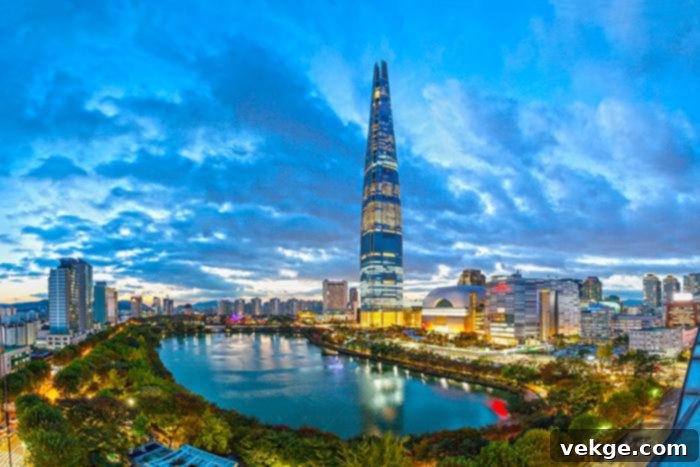
Overview: The Lotte World Tower is an architectural marvel, proudly standing as the tallest building in South Korea and ranking among the top five tallest buildings in the world. It is a testament to modern engineering and design.
Facts:
- Soaring to an incredible height of 555 meters (1,821 feet) with 123 floors, its distinctive slender, tapered form dominates the Seoul skyline.
- The project was completed in 2017 after a monumental 13 years of meticulous planning and intensive construction.
- It is a multi-functional complex housing luxury offices, a prestigious hotel (Signiel Seoul), high-end apartments, and the world’s highest glass-floor observation deck, Seoul Sky.
Why Visit: Experience the awe-inspiring Seoul Sky observatory for unmatched, dizzying views of the entire city and beyond. Explore the massive Lotte World Mall at its base, which offers extensive shopping, dining, and entertainment options, including the indoor Lotte World Adventure theme park.
12. The Blue House (Cheong Wa Dae)

Overview: Known as Cheong Wa Dae (meaning “pavilion of blue tiles”), The Blue House served as the official presidential residence and executive offices of South Korea for over 70 years. It holds immense political and historical significance.
Facts:
- The complex is famously named for its approximately 150,000 distinctive blue roof tiles, each fired individually to achieve its unique color and durability.
- While the site has historical roots dating back to the Goryeo Dynasty, the main presidential office building was completed in 1991, incorporating traditional Korean architectural elements.
- After being vacated by the presidency, it was opened to the public for the first time in 2022, transforming into a historical and cultural complex.
Why Visit: Take a guided tour of the extensive grounds where Korea’s presidents lived and worked, exploring beautiful traditional gardens, guesthouses, and exhibition halls that offer insights into recent Korean political history.
13. Dongdaemun Design Plaza (DDP)

Overview: The Dongdaemun Design Plaza (DDP) is a major urban development landmark and cultural hub in Seoul, globally recognized for its strikingly unique, neo-futuristic design by the renowned architect Zaha Hadid.
Facts:
- Completed in 2014, the DDP boasts a fluid, curved, and metallic facade that seamlessly integrates with the surrounding urban landscape, becoming an instant architectural icon.
- It serves as a multi-functional complex, housing various exhibition spaces, a design museum, laboratories, a media center, and fashion showcases, making it a pivotal point for Seoul’s creative industries.
- One of its popular attractions is the exterior LED rose garden, which illuminates at night, creating a magical and romantic atmosphere.
Why Visit: Witness cutting-edge architecture that pushes boundaries and explore the dynamic exhibition spaces. The DDP is surrounded by vibrant night markets and fashion districts, making it a perfect spot to experience Seoul’s energetic design and shopping scene.
14. Incheon International Airport (ICN)
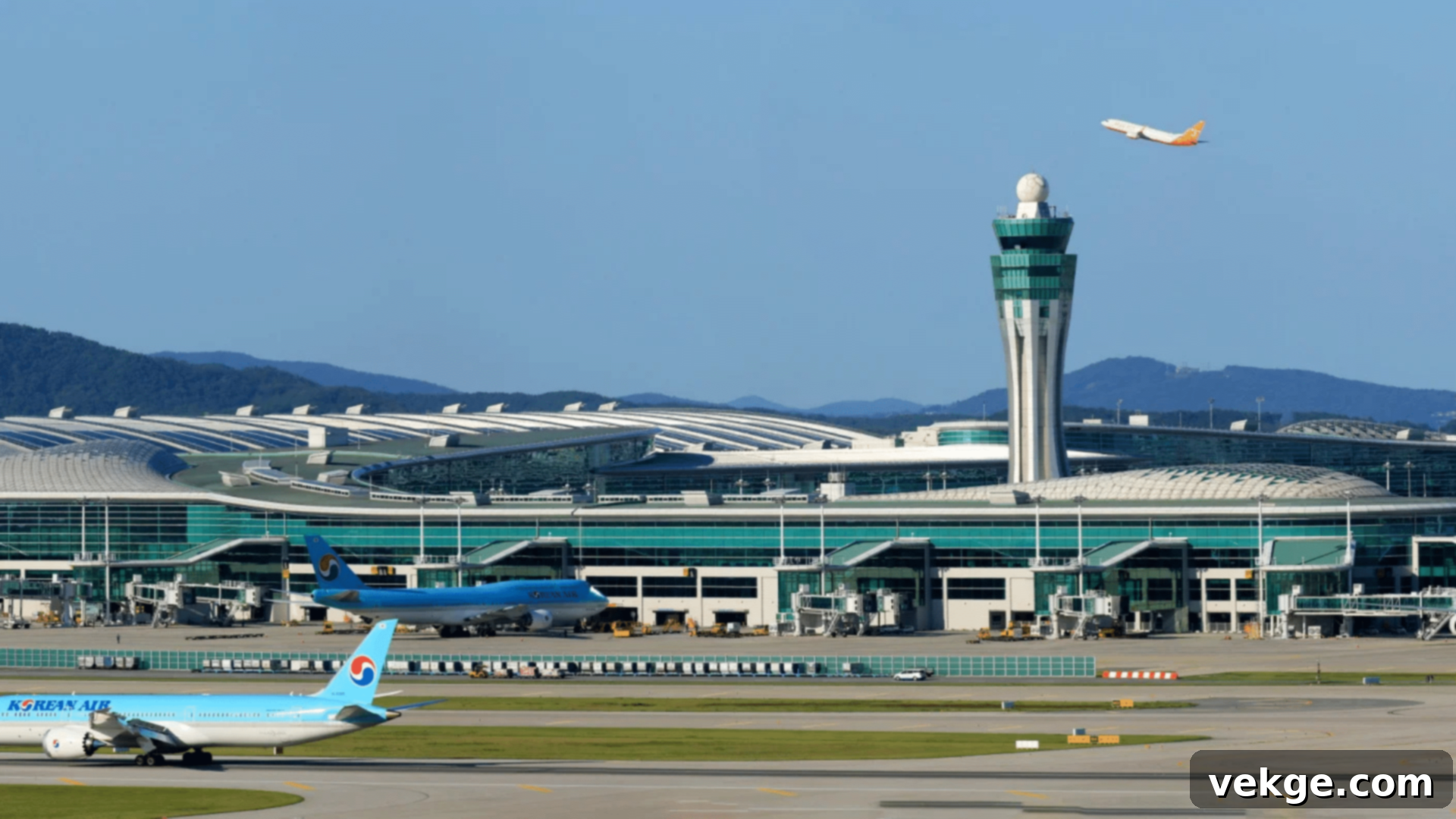
Overview: Incheon International Airport (ICN) is consistently ranked as one of the world’s best airports and serves as the primary gateway to South Korea, celebrated for its efficiency, advanced facilities, and outstanding passenger experience.
Facts:
- Opened in 2001, ICN has continually received prestigious awards and top rankings globally for its service, cleanliness, and operational excellence.
- The airport is not just a transit hub; it features impressive cultural performances, indoor gardens, a golf course, spa facilities, and museum exhibitions, making a layover an enjoyable experience.
- It efficiently handles over 70 million passengers annually, connecting South Korea to major cities worldwide.
Why Visit: Even if you’re just passing through, experience award-winning facilities that redefine airport travel. Take advantage of the cultural activities and relaxation zones, demonstrating South Korea’s commitment to hospitality from the moment you arrive.
15. The Korean Demilitarized Zone (DMZ)
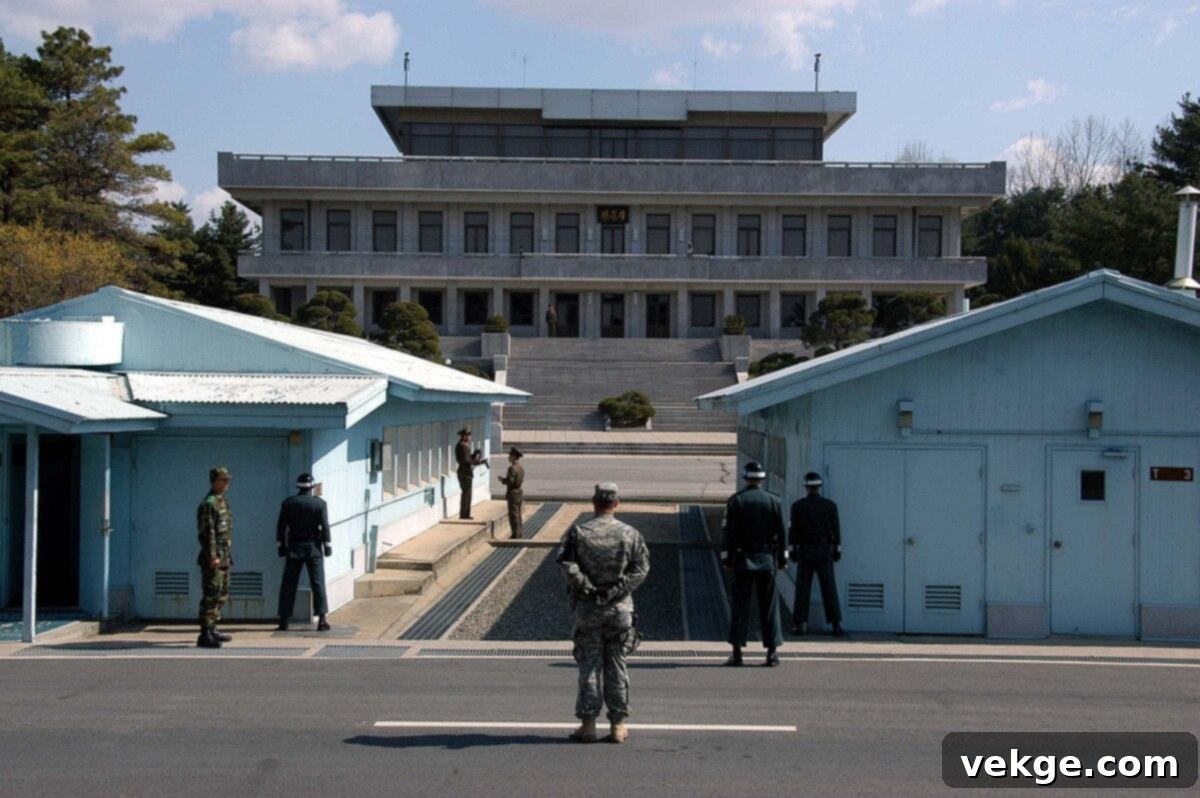
Overview: The Korean Demilitarized Zone (DMZ) represents the heavily fortified border area separating North and South Korea. It is a poignant, politically charged, and historically significant site, offering a stark reminder of the division between the two nations.
Facts:
- This 4-kilometer-wide, 250-kilometer-long buffer zone was established in 1953 as part of the armistice agreement that halted the Korean War.
- Despite its name, it remains one of the most heavily fortified borders in the world, bristling with military presence from both sides.
- It includes the Joint Security Area (JSA) or Panmunjom, where officials from both sides meet, and various observation posts and tunnels that are open to visitors.
Why Visit: Gain profound insights into the Korean conflict and the ongoing division of the peninsula through guided tours. From observation areas like the Dora Observatory, you can glimpse into North Korea, offering a unique and sobering perspective on recent history and geopolitical tensions.
Planning Your Visit to South Korea
A little bit of preparation before embarking on your journey to South Korea’s incredible landmarks will significantly enhance your trip. The country experiences four distinct seasons, each offering a unique charm and a different experience at these famous sites. Considering factors like typical weather patterns, potential crowd levels, and any special events can help you plan and make the absolute most of your Korean adventure.
Best Times to Visit
The spring months (April-May) and the autumn months (September-October) are generally considered the most ideal times to visit South Korea. These seasons offer wonderfully mild temperatures and incredibly beautiful scenery. Spring transforms many sites with delicate cherry blossoms, creating picturesque settings, while fall showcases stunning red and gold foliage, particularly at mountain parks like Seoraksan, attracting nature lovers from across the globe. Summer can be hot and rainy, with humidity peaks in July and August, while winter is cold, but offers unique snowy views and winter sports opportunities at places like Seoraksan.
Essential Travel Tips for Korea
Navigating South Korea’s vibrant cities and serene countryside is remarkably easy with the right tools and a bit of planning. Utilizing a reliable transportation card and a translation app can make your trip smoother and more enjoyable, ensuring a hassle-free experience.
- Public Transportation: Purchase a T-money card upon arrival. This rechargeable card works seamlessly on subways, buses, and even taxis across major cities.
- Tourist Discounts: Consider the Korea Tour Card for exclusive discounts on public transportation, attractions, shopping, and dining at many popular landmarks and businesses.
- Communication: Download reliable translation apps like Papago (Naver Papago) for easier communication, especially outside of major tourist areas where English might be less common.
- Advance Bookings: During peak seasons (spring and fall), it’s highly advisable to book palace tours, temple stay programs, and popular attractions in advance to secure your spot and avoid long queues.
- Comfortable Footwear: Many historical sites and natural parks involve considerable walking, sometimes on uneven terrain. Wear comfortable and supportive shoes to enjoy your explorations fully.
- Stay Connected: Rent a portable Wi-Fi egg (pocket Wi-Fi) or purchase a local SIM card at the airport to stay connected, which is invaluable for navigation and accessing information.
Cultural Etiquette to Observe
Understanding and respecting local customs will greatly enrich your travel experience in South Korea. Koreans appreciate visitors who show an effort to observe their traditions.
- Shoe Removal: It is customary and important to remove your shoes before entering temples, traditional hanok houses, and many restaurants. This shows respect and promotes cleanliness.
- Greetings and Bows: When greeting people, especially elders or those in a position of respect, a slight bow is a polite and commonly practiced gesture.
- Two-Handed Courtesy: When giving or receiving items, particularly business cards, money, or drinks, using both hands is a traditional way to show respect and humility.
- Noise Levels: Keep noise levels down, particularly at historical, religious, and residential sites, to maintain a respectful and peaceful environment.
- Photography: Always ask for permission before taking photos of individuals, especially in traditional villages or at religious ceremonies, to respect their privacy.
- Dining Etiquette: Wait for the eldest person to start eating before you begin. It’s generally considered impolite to blow your nose at the table.
Final Thoughts on South Korea Travel
South Korea truly offers an astounding depth and variety for any traveler, from its ancient historical sites that whisper tales of dynasties to its vibrant cityscapes pulsating with modern energy, and its serene natural spots providing peaceful escapes. Whether your interest lies in delving into a rich and complex past, embracing cutting-edge contemporary attractions, or simply soaking in breathtaking scenery, each place on this meticulously curated list holds something uniquely special.
We sincerely hope this comprehensive guide inspires and assists you in planning a trip filled with unforgettable moments and profound discoveries. Every single destination highlighted herein brilliantly reflects Korea’s deep-rooted history, its remarkably resilient spirit, and its lively, dynamic culture, unequivocally making it a country that deserves a spot on everyone’s travel bucket list. Now that you’re equipped with a list of South Korea’s must-visit spots, it’s the perfect time to finalize your plans and prepare to immerse yourself in the incredible experiences awaiting you in this truly remarkable destination!
